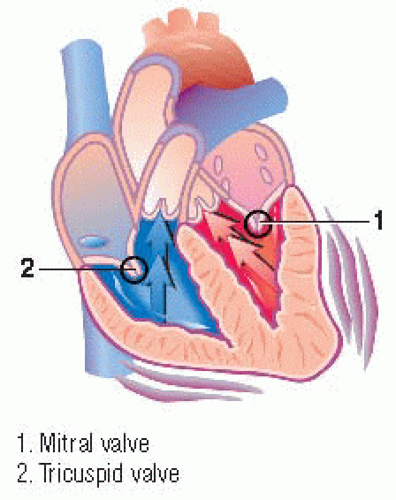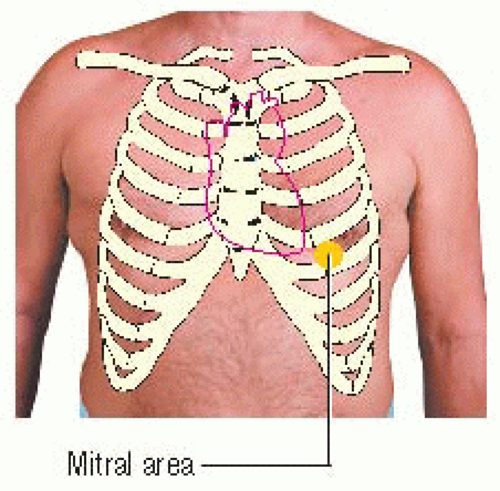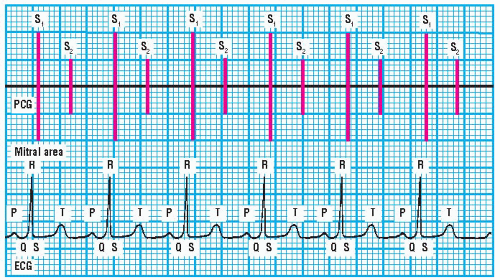The First Heart Sound
NORMAL S1
The cardiac vibrations associated with the closure of the mitral and tricuspid valves produce the first heart sound, S1. (♦ Sound 2) Normally, only two components of the first heart sound are audible. The first component, referred to as M1, is associated with the closure of the mitral valve; the second component, T1, is associated with the closure of the tricuspid valve. Both valves close at the beginning of ventricular systole, but the mitral valve usually closes slightly ahead of the tricuspid valve.
Auscultatory area and relationship to ECG
M1 and T1 are usually perceived as a single sound called S1, which is heard best near the apex of the heart over the mitral area, using the diaphragm of the stethoscope. A single sound is heard because left-sided heart sounds are normally more intense at this site. S1 occurs just after the QRS complex on the electrocardiogram (ECG) waveform.
As you inch the stethoscope from the mitral area toward the tricuspid area, without losing track of S1, the M1 and T1 components of S1 may become evident. Expiration makes them easier to hear. (♦ Sound 3) T1 trails M1 slightly and is softer; it’s heard best near the left sternal border. The timing of M1 and T1 with the QRS complex remains the same. In many patients, only the first heart sound is heard because M1 and T1 are separated by a 20-millisecond—or shorter—pause, which the human ear perceives as one sound. (See PCG and ECG showing normal S1 split, page 26.)
 AUSCULTATION TIP
AUSCULTATION TIPIf S1 is difficult to identify, palpate for the carotid pulse while performing auscultation. S1 will occur just before you feel the carotid pulse.







